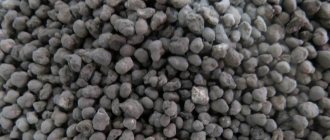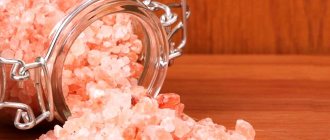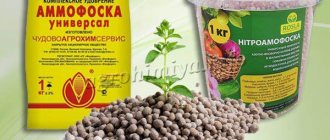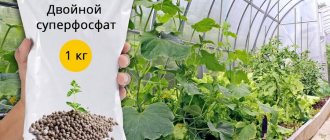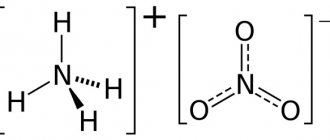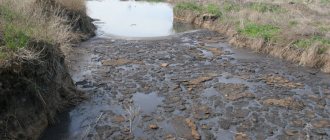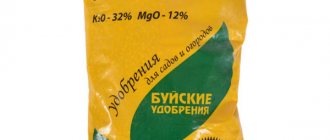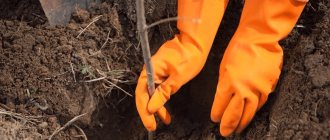Soil liming
Many people know lime as a building material, but gardeners and gardeners use it as a soil fertilizer.
The main purpose of this fertilizer is to reduce the acidity level of the soil. Most cultivated plants grown in gardens develop well in slightly acidic soil. If you regularly deoxidize the soil, it will be possible to grow larger and better crops.
What is lime?
It is a simple calcium oxide used in many manufacturing and other applications.
Gardeners use this substance to treat the soil with lime. Lime used for horticultural purposes comes in slaked and quicklime varieties.
Slaked lime (fluff) and its use in the garden is known to everyone who takes at least some professional care of their plantings. In order to obtain such fertilizer, it is enough to stir ordinary lime with water.
Quicklime is used in its original form, without mixing with water. Its properties are similar to the slaked version, but you should use it more carefully - not all plants will tolerate this well. Also, deoxidizing the soil with quicklime will help protect the plants after planting.
Liming the soil: application rates and timing, the meaning of deoxidation, instructions
The composition of the soil, and in particular its acidity, directly affects the normal development of crops. Since most plants feel comfortable in a neutral, alkaline and slightly acidic environment, periodic liming of the area will create optimal conditions for their growth, absorption of nutrients and abundant fruiting.
Signs of acidic soil
Soil deoxidation is a periodic measure, carried out approximately once every 5 years “according to indications.” Liming will benefit garden crops only if the soil is truly characterized by high acidity.
Soil pH can be determined using laboratory tests carried out by agricultural enterprises. You can independently determine the acidity of the soil in different areas of your land using a special device or litmus indicators.
In addition to the methods listed above, increased soil acidity and the need for liming can be determined by specific signs:
- the ground takes on a whitish or grayish tint,
- weeds are actively growing (horsetail, nettle, sorrel, sorrel, buttercup),
- the planted clover does not want to take root,
- when digging, a whitish layer in the soil is discovered.
Why is it necessary to lime the soil if there are signs of increased acidity? Deoxidation is required because such an environment has a detrimental and depressing effect on the development processes of vegetable and garden crops:
- In an acidic environment, plants cannot efficiently absorb phosphorus and nitrogen, which are necessary for their growth and development.
- Increased soil acidity reduces the effectiveness of beneficial bacteria living in it and increases the activity of pathogenic microorganisms, which attack already weakened crop plants.
To help plants, it is necessary to periodically deoxidize the soil. A slightly acidic environment is most comfortable for many crops, so careful liming will allow you to create an optimal environment for their growth and development.
How to deoxidize the soil
Soil deoxidation can be carried out by any alkaline compounds and substances:
- wood ash,
- lake lime (dry drywall),
- chalk,
- dolomite flour,
- peat ash,
- crushed eggshells.
The most accessible means for deoxidation is slaked or ordinary lime. This substance has a constant composition, so it is easy to dose depending on pH readings in different areas of the earth and the nature of the soil.
It is important to consider that many substances used in liming, in addition to the deoxidation effect, introduce certain micro- and macroelements into the soil: wood ash contains up to 35% calcium, chalk and drywall contain calcium carbonate, dolomite flour contains magnesium, and eggshells contain a whole range of useful elements.
Optimal timing for liming
It is advisable to carry out liming in advance, before the start of sowing, in which case the pH of the soil will have time to level out to values that are comfortable for vegetable and garden crops. You can perform deoxidation:
- Immediately after purchasing a plot, before planting a garden and distributing land for a vegetable garden.
- In the fall, along with the application of fertilizers (except manure). In this case, the soil must be dug up after liming.
- In winter - by scattering dolomite flour directly on the snow. Having melted, it will carry alkaline substances into the soil, evenly distributing them in depth.
- In spring - no less than 3 weeks before sowing, and only in beds intended for beets and cabbage. Other crops are planted on limed soil only the next year.
If you need to deoxidize the soil throughout the entire area, it is better to do this in the fall, then in the spring the land will be completely ready for sowing.
It will be enriched with nutrients important for the development of crops, and the improved pH will activate the activity of beneficial bacteria and increase the efficiency of fertilizers applied during the season by 40%.
Autumn deacidification
So, autumn liming of the soil is the most optimal way to deoxidize it. Initial treatment in the presence of an acidic pH reaction is carried out using ordinary or slaked lime in the following proportions:
Timely, radical autumn deoxidation allows you to solve a number of serious problems:
- activate the work of beneficial bacteria,
- increase the absorption of important microelements,
- by breaking down acids into simple elements, improve the mineral composition of the soil,
- increase the efficiency of mineral and organic fertilizers,
- reduce the number of toxic elements in the soil due to their breakdown,
- improve the physical properties of the soil in the beds, increasing water permeability.
To maintain the achieved pH value in the soil, it is necessary to regularly add substances that have an alkaline reaction.
Traditionally, gardeners scatter organic fertilizers and wood ash around the site before digging in the fall. The latter allows you to maintain a slightly acidic soil level and enriches it with elements useful for crops.
Features of garden crops
Undoubtedly, acidic soils negatively affect the development of vegetable and garden crops, but uncontrolled use of alkaline compounds can also harm plants. Excessive enthusiasm for soil deoxidation will lead to excess calcium, which will significantly impede the growth of root systems.
Drastic liming of the entire area in accordance with a certain pH level and soil type is not practical, since different crops require different types of soil. On the other hand, it is quite difficult to deoxidize different beds, taking into account crop rotation.
The easiest way is to reduce the consumption of lime during reclamation activities, making the soil moderately acidic, and then for each crop, “adjust” its composition in the spring, using wood ash. Some plants do not need to change their pH at all; they feel comfortable only in acidic conditions.
So, what are the requirements of various crops for the soil pH level:
- Beans, tomatoes, dill, corn, kale and eggplants like a slightly acidic environment (PH 6-7). Beds intended for melons, watermelons, squash, zucchini and carrots, as well as for garlic, onions and radishes, do not need liming.
- Medium acid soil (PH 5-6.5) is suitable for peppers, potatoes, beans, sorrel, parsnips and pumpkins.
- Strongly acidic soil (PH
Radical deoxidation must be carried out in the presence of obvious signs of an acidic environment or according to the results of tests, instrumental and laboratory measurements, and no more than once every 5 years.
Every year, when preparing a site for winter, it is recommended to add a little wood ash to the ground before digging in order to maintain the pH level at a level that is comfortable for plants.
Use for soil fertilization
You can buy lime at any specialized store and it is better to do it in bulk.
Firstly, it will be cheaper, and secondly, liming a large area of soil requires a lot of material, and it will be inconvenient to constantly buy more. Liming should not be carried out just like that, without understanding the features of using lime on acidic soil. If the procedure is carried out at the wrong time, at a critical moment (in the fall, during harvest or early spring) the plants will be left without protection.
Overdoing it with lime is also dangerous, regardless of how the excess was achieved - over several treatments or during one. Alkaline soil does not directly harm plants, but it does prevent them from absorbing essential macronutrients from the soil.
IMPORTANT! You should also be careful when using lime in parallel with other fertilizers - for example, the substance should definitely not be applied at the same time as manure, it will not be beneficial.
Features of soil application
Before liming acidic soils for the first time, determining the timing and rate of lime application, and doing other work to fertilize the site, it is worth determining the acidity level of the soil.
What substances are used for liming
In many ways, the yield and taste of fruits depends on the normal pH level in the soil. Its high levels can interfere with the absorption of nutrients by plants, and as a result, crops lag behind in development and there is no fruiting. To deoxidize the soil, substances that neutralize the soil are used, namely:
- lime;
- dolomite flour;
- wood ash;
- peat;
- blast furnace slag;
- waste left over from sugar production;
- construction dust;
On a note! Gypsum cannot be used, as it is capable of crystallizing salts contained in the soil, and this has the opposite effect, that is, the acidity, on the contrary, increases.
Weed control
The second purpose of this fertilizer is weed control. Weeds, which in the absence of control and timely destruction by the gardener become a real problem, growing and interfering with planting, do not tolerate alkaline soil.
Among these lovers of an acidic environment, you can notice many notorious pests :
- wild rosemary;
- sedge;
- creeping buttercup;
- big plantain;
- sorrel;
- wild mustard;
- meadow cornflower;
- club moss;
- daisy;
- cinquefoil, etc.
You can get rid of all these plants not only physically, but also by simply changing the acidity level to a lower one - the weeds simply cannot exist in such conditions and will die without producing offspring.
The need for liming
The need for the introduction of lime materials arises with an acidic and strongly acidic reaction, practically at a pH below 5.5. Moreover, the advisability of introducing these so-called agromeliorants is associated not only with the need to neutralize soil acidity, but also with increasing the content of calcium in the soil, and in some lands, magnesium.
The relevance of enriching the soil with these elements is explained both by the physiological need of plants for these nutrients and by their participation in the formation of soil structure. This manifests itself as follows: the earth is a colloidal system, the particles of which should normally be in the so-called coagulated (collapsed) state, and this requires calcium and magnesium ions, the amount of which should be proportional to the absorption capacity, depending on the mechanical composition of the soil, the amount and humus quality.
If there is not enough calcium and magnesium, then the soil particles are peptized (as if in suspension). At the same time, the soil floats, and this is accompanied by a decrease in pore volume, that is, there is less air in the soil (which means the roots can suffocate), an increased tendency to form a soil crust, and an increase in the stickiness and viscosity of the soil, which leads to more difficult processing.
The harmfulness of increased soil acidity reduces the availability of certain nutrients, inhibits beneficial soil bacteria and earthworms, increases the content of aluminum ions poisonous to plants in the soil, and reduces the structure of the soil.
Those who have forgotten about the essence of acidity can be reminded that natural environments can be acidic, neutral and alkaline, and an acidic environment implies an excess of hydrogen ions (H+). The most relevant is liming for crops that are most sensitive to soil acidity, such as legumes and tomatoes.
Visually, increased acidity of the soil can be indicated by the poor development of cultivated plants with the simultaneous prevalence of some weeds - indicators:
- horsetail,
- pikes,
- sorrel,
- creeping buttercup.
Increased acidity can also be indicated by the strong development of a podzolic horizon, which has a whitish color, the swimming of the arable horizon, the lack of structure of the soil and the frequent formation of a crust.
And the most accurate pH level can be determined using a pH meter or strips of indicator paper, which should be dipped into the soil extract. As a rule, liming is required on podzolic, sod-podzolic and peat soils.
Whitewashing trees with quicklime
Even those who do not have their own garden or any other farm containing fruit trees have noticed that the trunks are often treated with white lime mortar. This is a well-known rule for any gardener who wants to keep trees in the best condition - lime is a good protection for them.
Why is this necessary :
- Thermal insulation . In general, frost does not harm the tree, but with strong changes in temperature and humidity, ice may appear, which penetrates under the bark and spoils it, depriving the tree of protection.
- Protection from parasites . Many pests feed on the bark, but the shell, covered with lime, is not touched. Also, the chemical composition of such whitewash prevents the development of diseases typical of trees.
- Overheat protection . Not everyone knows that tree bark tends to overheat, crack and fall off the trunk in pieces, and lime reflects the rays well.
The entire tree does not need to be treated with lime - only the lower part of the trunk needs to be “painted”. Such preventive procedures for trees are carried out in the fall and spring - before winter cold and summer pest infestation.
There is an opinion that young trees cannot be protected in this way, but this is a myth. On the contrary, the thin bark of such plants needs protection even more.
If a gardener is concerned about the condition of the bark, he should think in advance about how much substance will be used - the norm for an adult tree can be halved.
Types of lime: how to choose for gardening?
Lime is the general name for the material that is obtained by processing rocks such as limestone. Its main mineral component is calcium. Depending on the chemical state it is in, several types of lime are distinguished:
| Type of lime | Chemical formula | Characteristics and purpose |
| Quicklime | CaO (calcium oxide) | A corrosive substance of hazard class 2 with pronounced alkaline properties. It can be produced in lumps or in ground form. Used in construction, in its pure form it is not suitable for gardening. Requires preliminary extinguishing. |
| Fluffy | Ca(OH)2 (calcium hydroxide) | The product of the reaction of quicklime with water. It is called “garden lime” because it is completely ready for use on the site. |
| Bleaching | 3Ca(OH)2*CaCl (a mixture of calcium hydroxide with hypochlorite and calcium chloride) | A product of chlorinated lime treatment. It is a caustic alkali. Can only be used for disinfection of outbuildings, greenhouses, cellars, and garden equipment. |
| Soda lime | Ca(OH)2*NaOH (mixture of calcium hydroxide and sodium hydroxide) | A substance that actively absorbs carbon dioxide and water has a strictly technical purpose. Not suitable for garden work. |
Thus, for standard garden manipulations you need to choose fluff lime. Quicklime construction lime can be useful if fluff is not at hand, but it will require preliminary slaking. Bleach is suitable for disinfecting equipment.
Soil deoxidation with fluff lime
Most cultivated plants prefer soils with a neutral environmental reaction. On acidic soils, their root system is not able to absorb nutrition from the soil solution, and the plants are depressed and produce a poor harvest. In addition, increased acidity prevents beneficial soil microflora from developing normally, which reduces soil fertility to zero.
However, the overwhelming majority of Russian summer residents are forced to deal with acidified soils. And even in initially favorable neutral environments, after the use of agrochemicals, the pH often shifts significantly. Therefore, the problem of periodic deoxidation faces almost every gardener.
From a school chemistry course, everyone knows that acids are neutralized by alkalis. Calcium oxide and hydroxide are alkalis, so they are very effective in bringing the soil pH to a neutral value.
Fluff lime is added to the soil in the fall, before digging. The application rate depends both on the initial acidity of the soil and on its physical composition:
| Soil type | pH<4.5 | pH 4.6-4.8 | pH 5.0-5.2 | pH 5.5 |
| Clayey | 700 g per 1 m2 | 600 g per 1 m2 | 500 g per 1 m2 | 450 g per 1 m2 |
| Heavy loam | 650 g per 1 m2 | 550 g per 1 m2 | 450 g per 1 m2 | 400 g per 1 m2 |
| Light loam | 450 g per 1 m2 | 350 g per 1 m2 | 300 g per 1 m2 | 250 g per 1 m2 |
| Sandy loam | 350 g per 1 m2 | 250 g per 1 m2 | 200 g per 1 m2 | 150 g per 1 m2 |
| Sandy | 300 g per 1 m2 | 200 g per 1 m2 | 150 g per 1 m2 | 100 g per 1 m2 |
Embedding of fluff into the soil is done to a depth of 10-15 cm. It is not recommended to combine liming and the application of mineral fertilizers, since nutrients in such a situation can turn into difficult-to-digest forms. The correct solution would be to deoxidize in the fall and apply fertilizer in the spring.
Fluff lime is one of the cheapest and most accessible deoxidizing agents. It is more effective than free wood ash. The average retail price for 1 kg of garden lime is 50 rubles per 1 kg.
Liming and gypsuming of soil
Gypsuming differs from liming the soil with lime in that it not only reduces acidity, but allows you to get rid of excess sodium in the soil. Sodium negatively affects the physical and chemical properties of the soil, and growing crops in such areas becomes much more difficult.
What chemical reactions occur after gypsum is added to the soil? The percentage of sodium decreases, and it is replaced by calcium abundantly added to the soil. Since calcium is beneficial for plants, its application has a positive effect on crop growth.
For gypsum, industrial waste with a high content of gypsum and phosphorus, as well as raw-ground gypsum, is usually used. To determine how much gypsum needs to be added, a biochemical analysis of the soil is first carried out, determining the amount of sodium it contains. On average, from 3 to 15 tons of fertilizer will be needed, and the greatest need for gypsum is found in solonetz and alkaline soils.
Plastering can be done during plowing, sowing perennial plants or irrigation. As a result, the yield of cultivated crops increases by 3-6 centners per hectare. It should be taken into account that gypsuming of irrigated areas is most effective, but the reclamation period of the site is also reduced.
